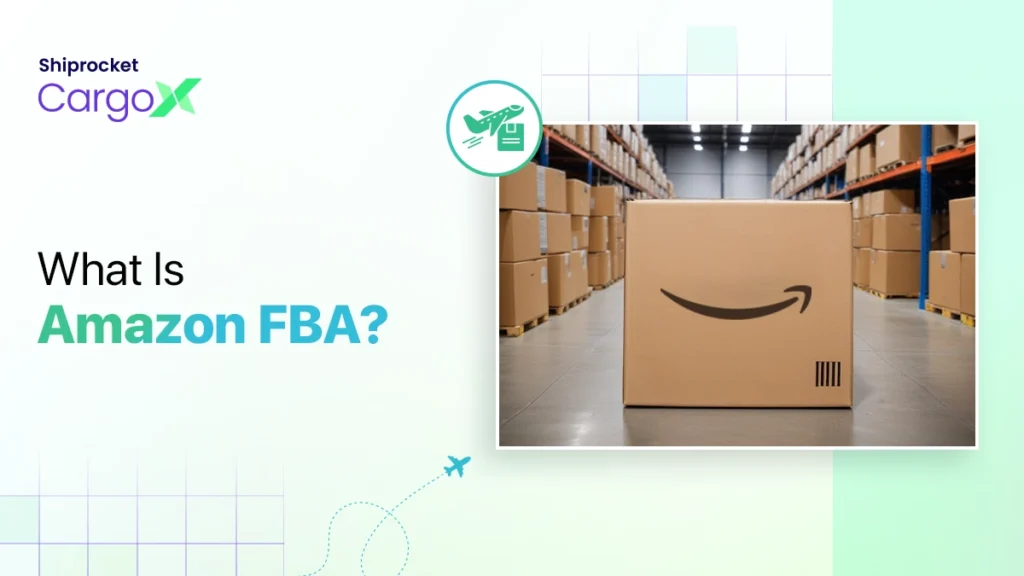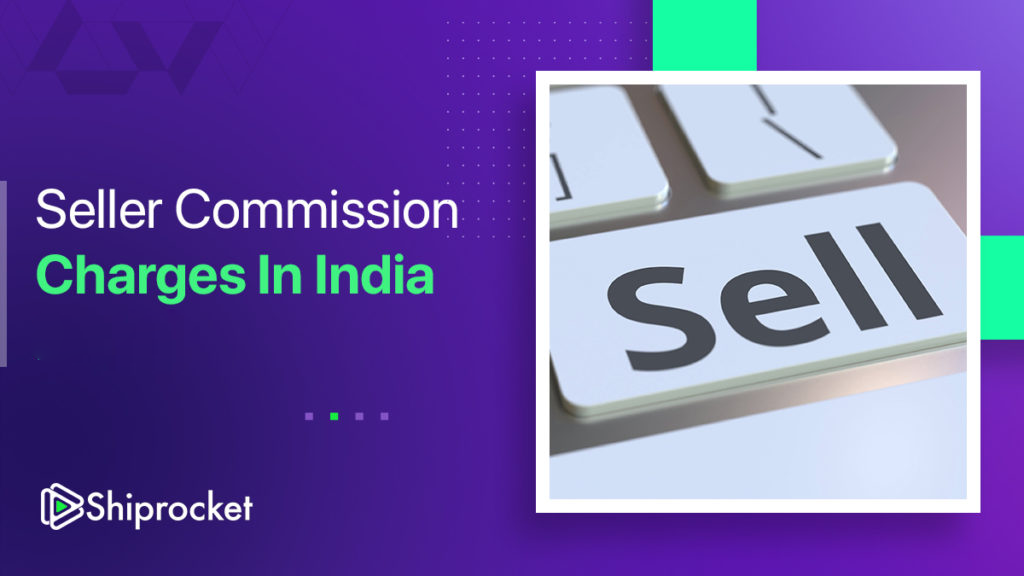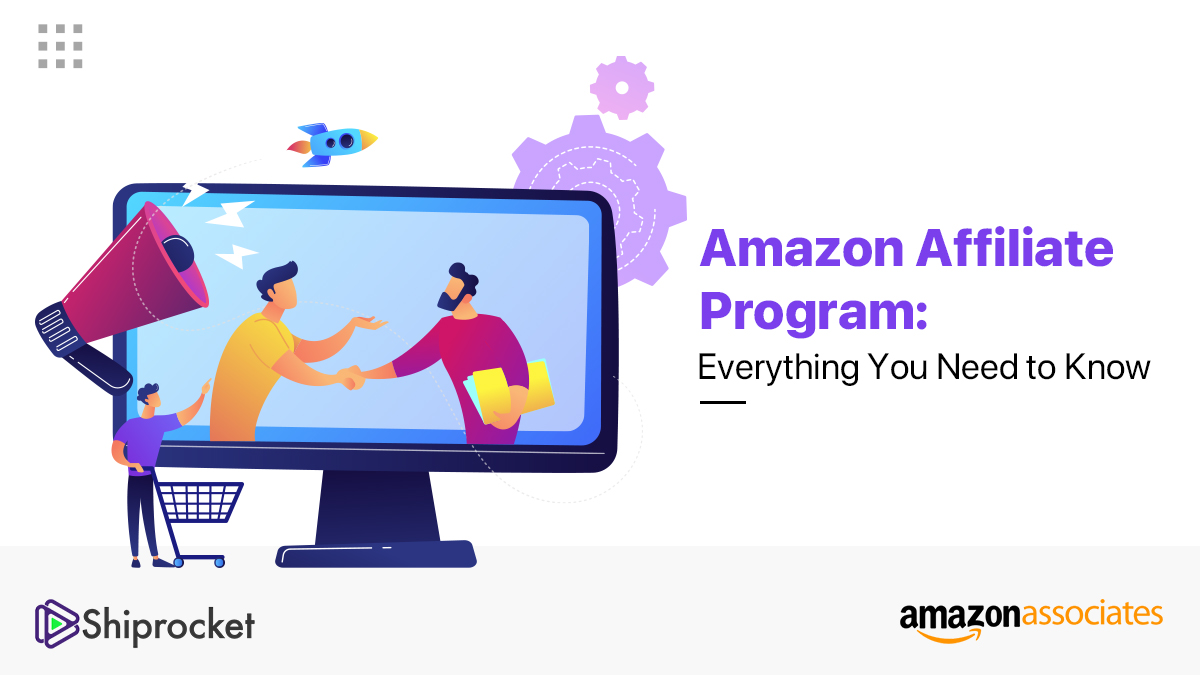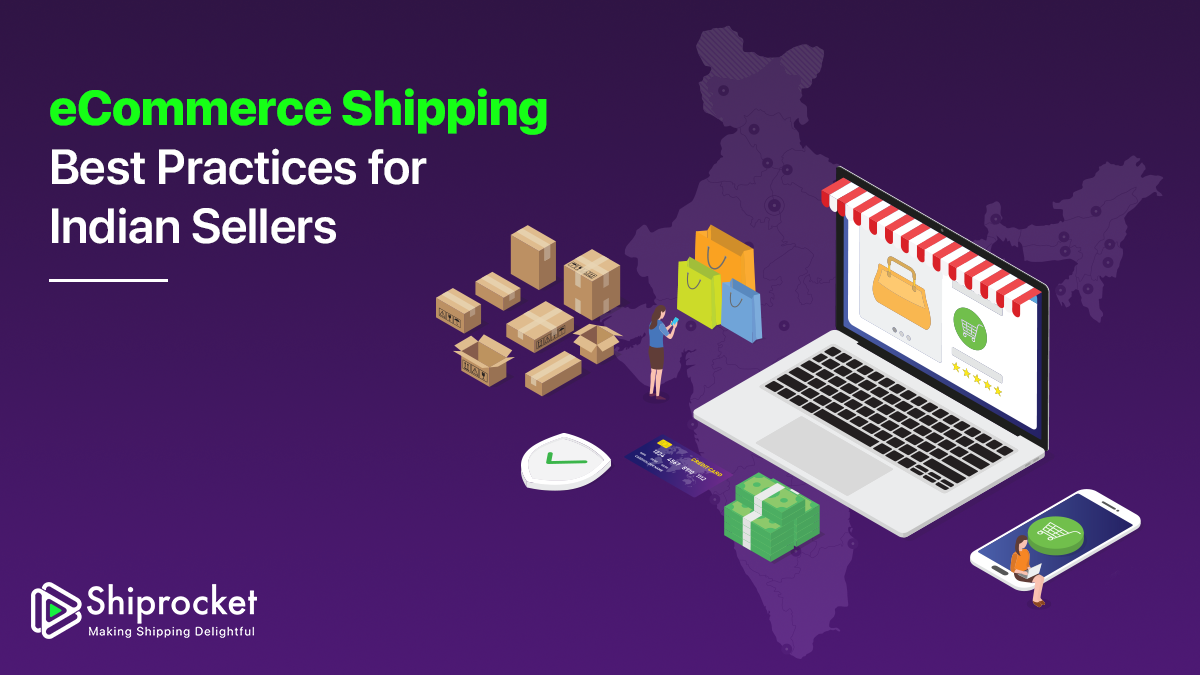- What is Fulfilled By Amazon (FBA)?
- How Does FBA Function?
- Types of Fulfillment Models
- Amazon FBA: Pros and Cons
- How Much Does it Cost to Use Amazon FBA?
- Is FBA Right for Your Business?
- Amazon FBA vs. Seller-Fulfilled Prime
- Benefits of Choosing FBA
- How to Get An Amazonesqe Service Without FBA?
- How to Maximise FBA Sales?
- Conclusion
In our previous blogs, we have talked at length about Amazon’s various fulfillment techniques like Amazon Self Ship, and Amazon Easy Ship, and also what benefits you can derive if you ship using Shiprocket when you opt for Amazon self-ship. There is one segment that we are yet to cover — Fulfilled By Amazon. This blog talks in detail about FBA, its benefits, and whether it is the right call for your eCommerce business.

What is Fulfilled By Amazon (FBA)?
Fulfillment by Amazon, as the name suggests is Amazon’s order fulfillment model where Amazon takes responsibility for inventory management, storage, picking, packing, shipping, and customer service for your orders. Your role is to deliver your products to Amazon’s fulfillment center.
With Amazon FBA you can leverage their marketplace, world-class fulfillment services, more options for delivery, and critically acclaimed customer service. You are also enrolled in their Prime program once you sign up for Amazon FBA. Therefore, with FBA and prime, you are eligible for free delivery, one-day delivery, and same-day delivery. A survey by Amazon pointed out that 86% of prime sellers reported an increase in sales once they shifted to FBA.
How Does FBA Function?

First, you deliver your products to Amazon’s fulfillment center, or you can schedule a pickup. Pickups are done using their inbound pickup services using their Logistics Network, Amazon Transport Service (ATS).
Next, Amazon stores your inventory and manages every product you provide to them. When you receive an order on your marketplace, Amazon picks the order, packs it and ships it to the customer. In case of any query regarding the delivery or the product, Amazon’s customer support team is responsible for catering to the customer’s concerns. You then send more products to the fulfillment center, and the cycle continues.
Types of Fulfillment Models
There are five types of business models, including the following:
- In-house fulfillment: Shipping and storing orders from a place of business is the most common approach for smaller businesses. Such an opinion limits the variety and quantity of the products sold. It also increases the overhead expenses of the business. The in-house fulfillment method is suitable when you sell a low volume of products, have a large logistics network, and sell products that have complicated packing requirements. Completing an order cycle may become more challenging when orders increase. With such a fulfillment model, you can scale your warehouse needs or outsource fulfillment for some products to a third party.
- Dropshipping: It is a model that outsources all the supply chain processes either partially or completely from delivery through returns. You can use this fulfillment model to work with manufacturers and third-party partners and send orders directly to your customers. It is an appealing method as it minimises the overhead costs and inventory carrying costs. You can focus on your business operations and marketing the products since inventory handling and order fulfillment becomes the job of the supplier.
- Third-party fulfillment: This fulfillment model involves outsourcing different e-commerce logistics processes. These include warehousing, picking and packing orders, inventory management, shipping orders, and even managing returns.
- Multi-channel fulfillment: The process of handling, managing, and fulfilling orders through different channels is the idea behind a multi-channel model. If your customers purchase your products from different channels, including your e-commerce website, social media, Amazon, etc.
- Amazon fulfillment: Many e-commerce businesses are using Amazon Prime to meet their customer expectations of quick and reliable order deliveries. Amazon FBA is the right option for your e-commerce business if you want to focus on scaling your business and need a complete solution for inventory storage, shipping, and returns. And lastly, you want to attract more customers by offering free and fast shipping. With Amazon FBA, you can take advantage of its huge distribution network, exceptional delivery service, returns handling, and customer support.
Amazon FBA: Pros and Cons
Just like everything, joining the Amazon FBA program has its pros and cons.
The pros include the following:
- You can leverage the Amazon brand name and reputation to market your products. The reliability of Amazon is well-known and you can use this as credibility for your own products. The trust factor helps you improve your sales numbers.
- You gain the chance to deliver quick operations. Amazon has a unique online shopping system and it gives you speedy loading and delivery options. They are more capable of delivering your products quickly and efficiently.
- You can give your customers the option of free shipping. Amazon Prime offers its customers free shipping services and you gain this benefit over non-FBA sellers when you use an Amazon model for selling your products. On average, Amazon FBA’s shipping service costs 30% less per unit.
- With Amazon FBA, lower operation costs are an added advantage. You can forget about the storage, staff, and management expenses when you use Amazon models. You can increase your earnings and deliver more products by this method.
- Amazon Multi-Channel Fulfillment (MCF) allows you to sell your products on other channels while Amazon will still fulfill those orders.
- Amazon offers round-the-clock customer support for FBA sellers.
The cons include the following:
- Costly fee: Storage fees and fulfillment fees are costs that can pile up quickly with slow-moving products and oversized products. The sellers are also charged for the removal fees for products that are damaged and unsellable.
- Product handling: Inventory can get lost and damaged while handling. Although, this error can be Amazon’s and not the sellers, it can cause you your inventory. Amazing, however, does reimburse the seller but when smaller issues are encountered they may go unnoticed and cause the seller a loss.
- Accurate product guidelines: Certain products have specific guidelines to be followed as per Amazon’s rules. These are in place to ensure that the products arrive in optimal condition. Hence, it will cost the seller a per-item fee.
- Stickerless commingling: Products that come from the same manufacturer are often commingled on Amazon. So if two sellers are selling the same products, they are mingled.
- Greater returns rate: Amazon has an open return policy. This has, in return, resulted in a higher number of returns for most of the sellers.
- Product comingling: Amazon often comingles products with the same manufacturer ID even if they are from different third-party merchants. In simple terms, it pools similar products together to increase fulfillment efficiency. For merchants, it may have a negative impact when their products are mixed with low-quality products.
How Much Does it Cost to Use Amazon FBA?
The cost to sell on Amazon will depend on the type of business model you have selected.
- Standard seller fee: Amazon charges around 15% to 18% of the product’s price as the fee for the seller. The actual amount varies based on the product being sold. Although Amazon says that they charge only around 15%, there are certain hidden charges like refunds that are not charged back completely.
- Fulfillment fee: These are charges levied per unit of the product sold. It varies based on the size of the product and it includes the charges for packing, shipping, packing, and handling. It also includes customer service and product return costs.
- Inventory handling and storage fee: Based on the month and the everyday average volume, the sellers are levied a monthly storage fee. These fees also vary based on the product size. Long-term fees are those that are levied on products that are stored for over a year in addition to any monthly inventory fee.
- International shipping fee: Global export is now an option with Amazon and they enable their sellers to send their inventory across the world.
Is FBA Right for Your Business?
The ideal fulfillment solution for any e-commerce business will be dependent on many factors including the nature of your business. The type of products sold, the location, and the approach to satisfy consumer demands. A business model like Amazon FBA will be best for your business when:
- You want to minimise the burden of fulfillment
- Require help in scaling your business
- Outsource storage, shipping, returns handling, and consumer service
- Need your products to be Prime shipping eligible
- Require help for customer service features
- Inability to afford warehouse space and employees to handle it
Amazon FBA vs. Seller-Fulfilled Prime
Let’s dive into the key differences between Amazon FBA and Seller-Fulfilled Prime.
| Amazon FBA | Seller-fulfilled Prime |
|---|---|
| FBA gives you the provision to opt for storage and inventory | Gives you access to Amazon Prime services and a customer base that allows you to sell, fulfill, and find products |
| You do not need to pay all the shipping expenses, thus, profits are greater | The entire shipping cost is borne by the seller thus costing the seller a substantial portion of their profits |
| Handles the inventory, storage, and packing | Inventory handling, storage, and packing are not under Amazon’s jurisdiction |
| FBA handles most of the managing process making it a smaller burden on the seller | Requires a great deal of attention to set up |
Benefits of Choosing FBA
In 2022, 89% of Amazon sellers have used FBA, making Amazon FBA one of the most popular business models. While 21% of these sellers combined FBA with the Fulfillment by Merchant (FBM) models, 68% used FBA exclusively. When you consider the number of sellers already leveraging Amazon FBA to grow their business, it becomes obvious that they must be doing so because of the benefits they may be enjoying.
Let’s look at some of the many benefits Amazon FBA sellers enjoy.
Undivided Attention to Business
With a company like Amazon, taking care of operations like inventory management, picking, packaging, and customer service, you can quickly focus on other aspects of your business like procurement, marketing, and sales. Since the former operations take up a lot of time, growth and innovation take a backseat, and you tend to lose the competition. But with FBA you can focus on growth.
No Hassles of Shipping
Shipping takes up significant time and resources of any eCommerce business. As eCommerce logistics is a separate entity altogether, you have to give it a substantial chunk of your plan. But since in FBA, Amazon looks after the shipping via their logistics network, ATS, you can point your resources directly at other segments of your business and also save on shipping and workforce.
No Additional Investments
Since you do not have to arrange for storage and handling of goods, you save on investments in other assets like a warehouse, packaging material, loading and unloading equipment, etc. This step saves you the right amount of time and costs and gives you an opportunity to explore other areas in your business.
Pay for Each Order
Amazon’s FBA pricing does not require you to pay them any extra subscription fee or set up charges for using FBA services. You pay a fixed closing fee, fulfillment fees, removal fees, and disposal fees for every item.
Faster Delivery Options with Prime
When you sign up for FBA, you are given Prime for free. With this, you get to offer your customers expedited shipping options like same-day, one-day, and two-day delivery. This option gives you an edge over your competitors and adds value to your store.
Increased Visibility Among Users
Amazon promises improved exposure for your products when you choose FBA, this way your products are displayed first on search results on Amazon, and you get to sell to a vast audience that shops from Amazon. In fact, FBA sellers have reported an average increase of 20% to 25% in sales as compared to sellers who don’t use FBA.
Pay on Delivery
With Prime and FBA, you get the benefit of giving your buyers the option of paying for the product when it arrives. This payment method is also popularly known as Cash on Delivery. In a country like India where eCommerce is still in its nascent stages, pay-on-delivery goes a long way in increasing trust among buyers.
How to Get An Amazonesqe Service Without FBA?
Amazon FBA has become one of the most popular fulfillment models because of Amazon’s huge fulfillment centers. However, even today, a major population of eCommerce sellers does not sell on Amazon. How can they achieve such a service? With 3PL providers like Shiprocket Fulfillment.
Shiprocket Fulfillment is a warehousing and distribution service that provides you with centers in various cities across India. You can stock your inventory in these state-of-the-art fulfillment centers and process orders faster than ever. When you distribute inventory across the country, you can store products closer to customers and deliver up to 2X faster.
You also get 30 free storage with Shiprocket Fulfillment without any minimum cost commitment. This makes it extremely lucrative for businesses with fast-moving inventory who want to simplify operations and deliver quicker at low costs.
How to Maximise FBA Sales?
You can streamline your processes and maximise your sales by simply following a few tips and tricks mentioned below:
- Use online analytics tools: you can use online tools for product research for popular items on Amazon. It can help you determine the best categories of products to sell to your customers.
- Be smart about your product range and selection: Products with high ranking on Amazon sell quickly and they also keep the inventory moving. By choosing categories with fewer products and high rankings, you can also become a leading seller.
- Building your brand: A brand is not built in one day. It requires patience and time to make its position in the eyes of its customers. Striving for good reviews and making sure that your metrics enable you to maximise your sales is key to establishing brand loyalty among your customers.
- Using Amazon FBA in the right manner: When you properly integrate all of Amazon FBA’s offerings, you will be easily able to sell more products, earn more profits, and scale your business. You must begin small and choose to sell the right products if you want to make the most of Amazon FBA.
- Prompt responses to customers: Engagement and quickly responding to your customers’ queries and questions is key to giving them a good shopping experience. By politely accepting criticism and responding to their problems, you will build trust amongst your buyers.
Conclusion
Use these pointers and decide if FBA is the right call for your business. If not, you can opt for other options like 3PL providers like Shiprocket Fulfillment!






I will like to understand more in details wrt eCommerce shipping thru shiprocket